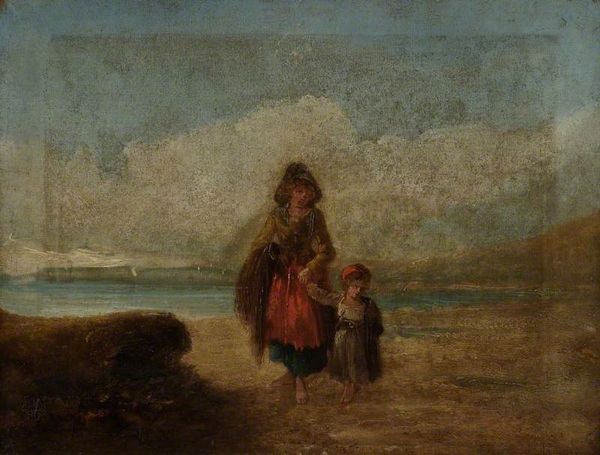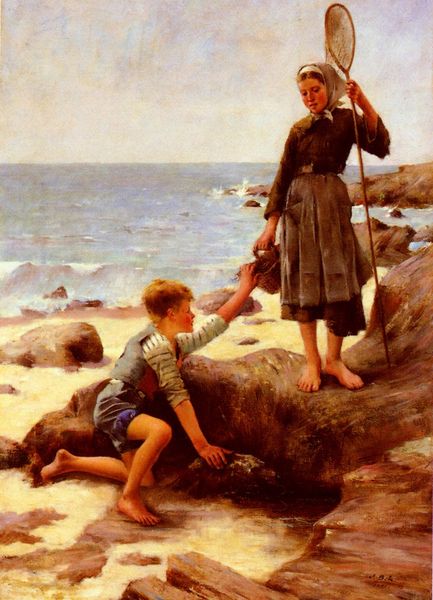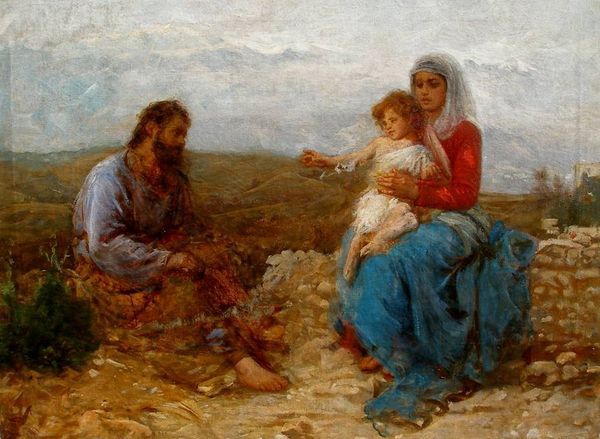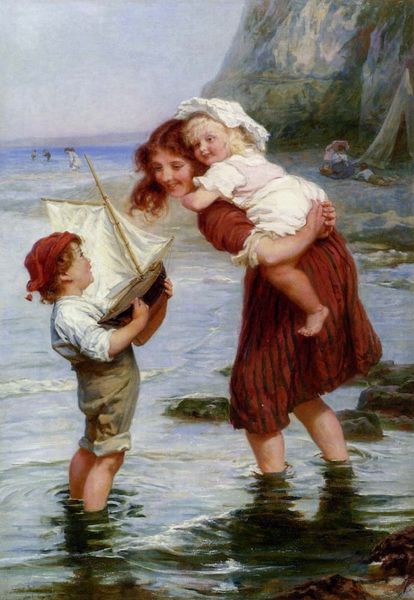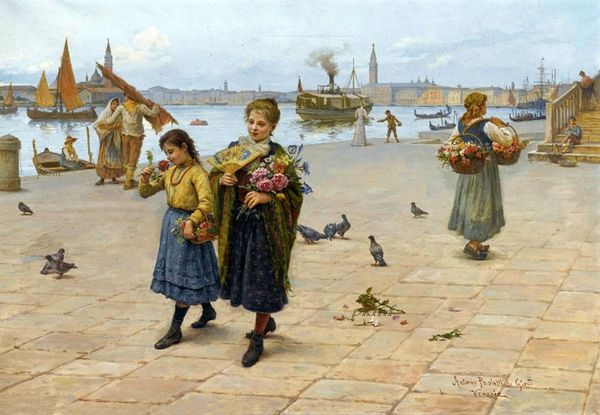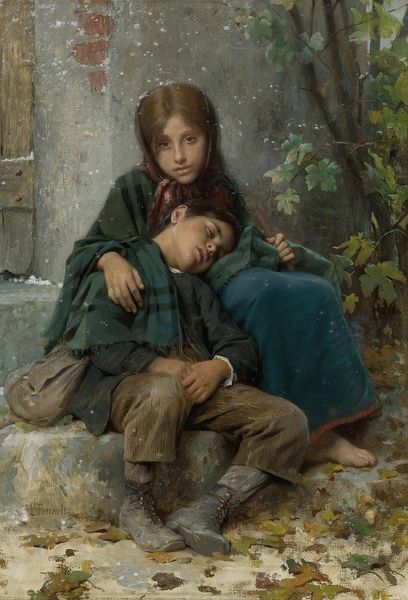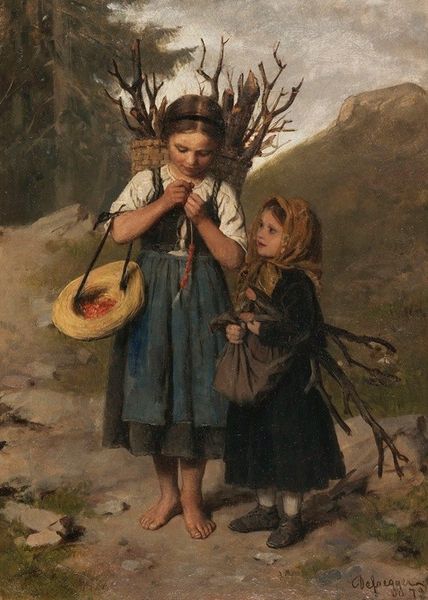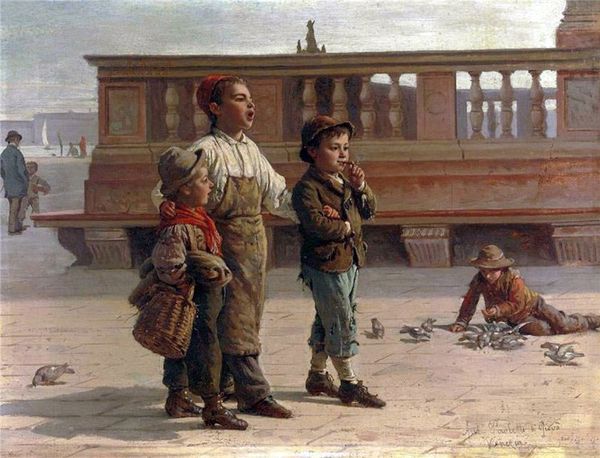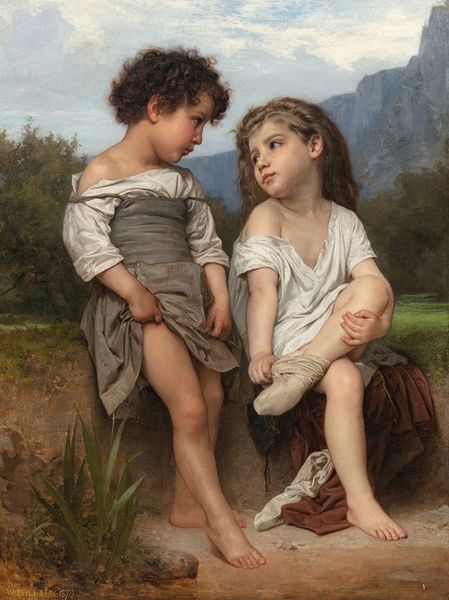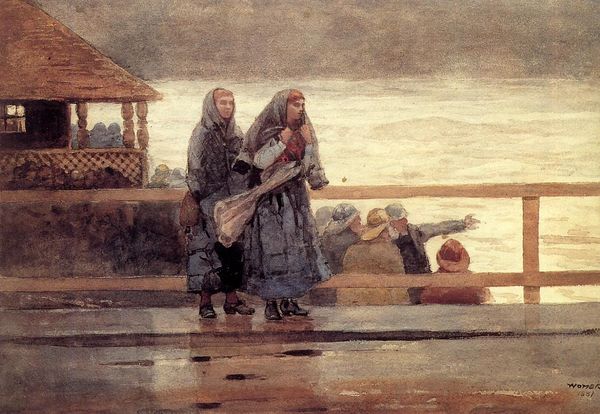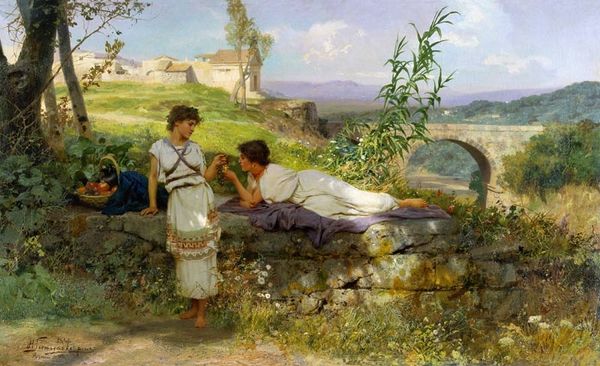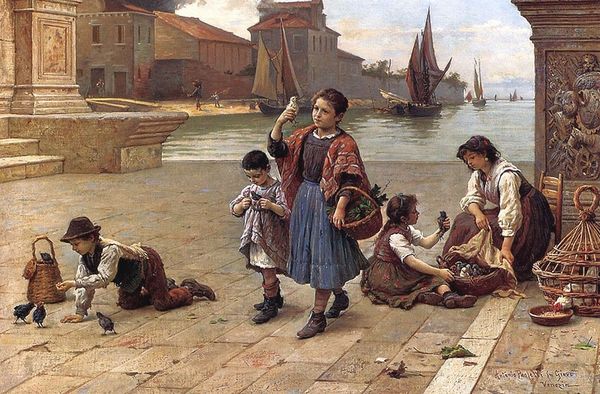
Copyright: Public domain
Curator: Looking at "A Morning Sail" by Laslett John Pott, created around 1870 with oil paint, my immediate reaction is one of precarious innocence. Editor: Precarious is spot on. These children, particularly the boy, look hesitant. There's a certain vulnerability there. The composition, the positioning of the figures relative to the sea and the implied journey ahead… it’s ripe with implied narrative. Curator: Precisely. The narrative hints at social class. Consider the contrast: The girl, in her bright white dress and neatly tied sash, and the boy with bare feet, ragged trousers and a blanket-like garment, who carefully aids her crossing the makeshift bridge. Editor: Yes, the stark difference in their clothing speaks volumes. Pott is subtly pointing at the social stratification inherent even in childhood pastimes. The girl could almost be a figure of privilege being ushered into the next stage, while the boy appears wary of where the sail is taking her. But that act of support feels poignant; the image itself seems like an icon of that social interaction. Curator: An icon is an excellent term for it. And beyond the direct social critique, I find the symbol of the sailboat loaded. Pott painted it during the height of the Industrial Revolution in England, but despite all the technological advances of that era, it seems children still remained children. The voyage into an unknown future feels constant. Editor: It is a particularly salient observation, that in the end there will be only time and sails for those children. In its own way, this idyllic seascape feels tinged with anxieties around an uncertain destiny in a world of social stratification. What stays with you most as you look at it now? Curator: The visual story of their interactions across different eras and socioeconomic strata makes the image powerful to behold. It’s that continued emotional accessibility of the symbol that’s impactful. How about you? Editor: For me, it’s how Pott’s work functions almost like a public history, a visual record reflecting the ongoing conversation about class, innocence, and the enduring symbolic weight carried within genre painting itself.
Comments
No comments
Be the first to comment and join the conversation on the ultimate creative platform.


